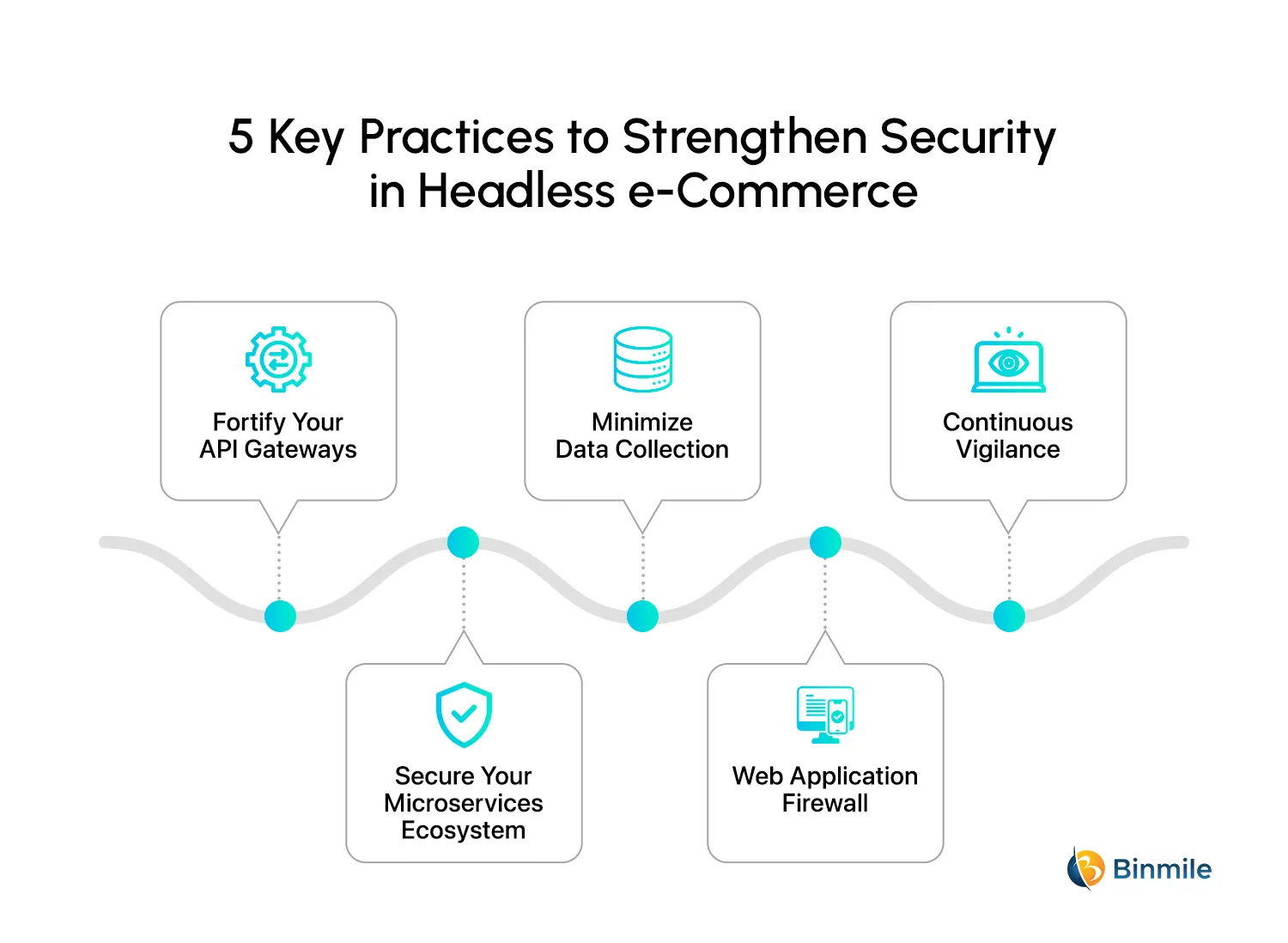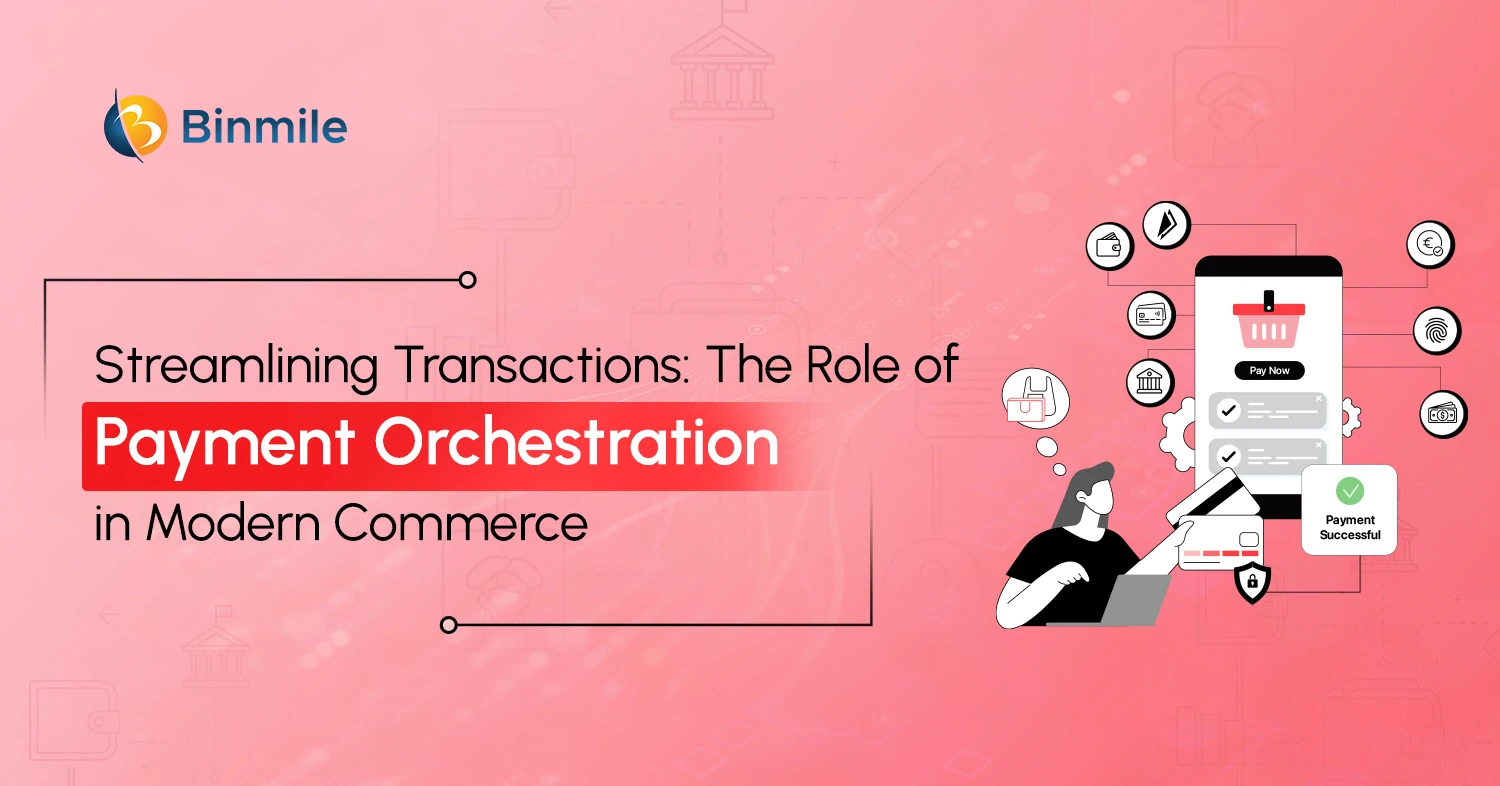- 5 best practice of headless eCommerce
- ecommerce architecture security
- eCommerce best practices
- eCommerce best practices for security
- ecommerce security best practices
- headless e-commerce security
- Headless eCommerce Business Benefits
- importance of e- commerce security
- strengthen security in headless eCommerce
The success of your online store depends a lot on how secure, well designed and highly-functional your eCommerce website is. Your website needs to load quickly, offer seamless and secure online shopping experiences. Checkout processes must be efficient with products expected to arrive in a matter of days. With breach of online information causing ecommerce companies to lose more than $48 billion in revenue, it becomes quite challenging to meet these demands if you don’t have a strong technical foundation and optimized ecommerce architecture. Moreover, your online shop architecture should concern both back-end and front-end and offer security and flexibility to your website. So what should be done? Are there any eCommerce security best practices to build a website to embrace digital transformation in retail? Top strategies to safeguard brand online reputation, build trust and enhance customer experience.
Yes to all of these.
Every aspect of your ecommerce web development right from the design, structure, and functionality impacts user experience, conversion rates, and search engine optimization significantly. You need to ensure you tick all the checkboxes. So, relax, we’ve got you covered. We’ll help you navigate through the complicated world of headless e-commerce security risks. Whether you’re just starting out or you’re innovating on top of your current headless implementation, these eCommerce security considerations will surely help you deliver secured and customized shopping experiences across channels.
Top Ecommerce Security Best Practices for Headless Architectures Security in 2024
In headless commerce, a subset of eCommerce, the frontend storefront is decoupled from the backend systems and connected via APIs. It means, headless commerce architecture separates between your eCommerce application’s front end (your storefront and user experience) and the back end (your data and business logic). Your storefront is a website, mobile app, IoT device, etc while the business logic includes the commerce platform, product information management, order management, and fulfillment systems. Therefore, when you make change or alteration in the platform’s front it doesn’t impact your back-end as they operate independently. This form of flexibility is a game changer, for many. As it offers retailers freedom to build whatever, and however they want.
5 Ecommerce Best Practices to Strengthen Security in Headless Commerce
There’s no doubt headless commerce offers a dynamic and adaptable approach, however, its distributed nature presents certain security challenges. So, let’s discuss 5 essential yet eCommerce best practices to bolster your headless commerce security:

#1 Fortify Your API Gateways
APIs are your bridge between your front-end operations and customer-facing applications which contain sensitive customers’ information. Some of the security measures that have to be put in place include strong authentication mechanisms such as OAuth 2. 0 which authenticates the user from a safe authorization server. This makes sure that only those applications that you are permitted to access your API can do so. MFA ensures your user has to provide two forms of identification on top of the password, for instance, the user has to provide a code sent to his/her mobile. Avoid keeping API keys into the code base – they can be substituted by utilizing secure environment variables.
#2 Secure Your Microservices Ecosystem
Headless architecture relies on microservices which are capable of managing products, carts, or orders, etc, so they should be treated as security checkpoints. Therefore, implement authorization controls only for authorized services, and nobody should be allowed access to them. This ensures that users with the right key are allowed to access the data. With so many new vulnerabilities evolving, one must keep scanning and patching each microservice for stronger defense. To ensure maximum protection of the system from hackers, set the computer to periodically scan to identify potential weaknesses and promptly apply security patches provided by the software vendors.
#3 Minimize Data Collection
Ensure that you always collect only essential customer’s data necessary for running your operations. Can a customer be asked to provide the entirety of his address every time he makes a purchase? Collecting less data means equally less data can be targeted by hackers. For processes where personal information is not needed, the data must always be anonymized; and where it’s needed replacing names with unique identifiers. numbers or other codes, also delete information that is not required after a certain period of time. This keeps the extent of information that can be compromised at an all time low and at the same time curtails the vulnerability of sharing information. Moreover, implement data retention policies and data recovery policies in case you face a data breach.
#4 Web Application Firewall
This acts as a vigilant guard to filter out all incoming traffic to your online store and denies entries of traffic that look suspicious and malicious. It can also prevent attacks such as SQL injections, where the attacker tries to insert an SQL code in order to infiltrate the system or the cross site scripting (XSS) where the attacker puts in a script on the website that steals the users’ information. Set up your WAF in such a fashion that it can diagnose any malicious activity that violates your pre-set rules and prevent it from getting to your servers. In addition to that, ensure that the WAF rules you are using, are updated with the latest rules as per the changing threats and vulnerabilities.
#5 Continuous Vigilance
Software vulnerabilities are always around the corner and headless architectures are complex which include components like your headless platform, API, third-party applications, and front-end applications. Preemptively manage security risks by staying updated on security patches for all these facets and choosing automated software testing services. Some vendors offer automatic update notifications, or it can be done on a schedule. It’s advisable to automate the patching process so as to apply the patching at the right time as timely and regular patching reduces the windows of opportunity for attackers to exploit the vulnerabilities.
Read More: Cost of eCommerce MVP Development
A secure environment is your most compelling sales argument in today’s digital marketplace, get in touch to know we help you excel at it!
Headless Commerce Architecture: A Beginner’s Guide to Modernizing Your Online Store
As we discussed earlier, headless commerce breaks away from traditional monolithic architectures where the front-end (user interface) and back-end (data and logic) are totally couped. This separation offers greater flexibility and agility to the businesses. So, imagine a scenario where you made changes to the storefront (front-end) independently of the stockroom (back-end) systems. Thus, the eCommerce architecture empowers businesses to tailor the customer experience (front-end) to any device or eCommerce cross development platform, while keeping the back-end robust and scalable. This translates to a future-proof solution that can adapt to evolving customer needs, and ecommerce tech stack trends and advancements.
Top 5 Key Benefits Headless eCommerce offers Businesses

- Enhanced Security: It allows for robust security measures like strong API authentication and authorization controls. This creates a secure gateway to sensitive customer data.
- Unmatched Agility: The decoupled nature of headless commerce lets businesses update the front-end experience quickly and easily without impacting the back-end operations.
- Omnichannel Experience: It also empowers businesses to deliver a seamless customer experience and ecommerce personalization services across all touchpoints.
- Future-proof Scalability: The independent scaling of front-end and back-end in headless commerce enables businesses to handle growing traffic volumes and integrate with new technologies seamlessly.
- Reduced Development Costs: Leveraging top-notch solutions for front-end and back-end development, headless commerce can streamline development processes and potentially reduce costs.
Keep Reading: D2C eCommerce Strategy
Closing Statement
Headless architecture takes center stage among other architectures as it grants the freedom, speed, and autonomy the digital-sphere user interface requires. Moreover, with this approach, you can offer them a consistent experience across channels and incorporate all the new channels they may adapt over time (like voice-centric touch points or wearables). However, with cybersecurity being an ever-evolving landscape, maintaining vigilance through continuous system monitoring, and adapting your defenses accordingly is paramount. In this blog, we discussed headless architecture and the best tips for keeping your eCommerce platform secured. Hopefully, implementing the ecommerce best practices for security would empower you to confidently navigate the dynamic world of headless commerce, fostering trust and propelling your business forward.
Binmile’s custom software development services leverage the power of headless architecture to craft secure, scalable, and future-proof online stores. Our team of experienced developers offer web development solutions by implementing industry best practices and cutting-edge technologies to help you deliver exceptional customer experiences and drive business growth.









